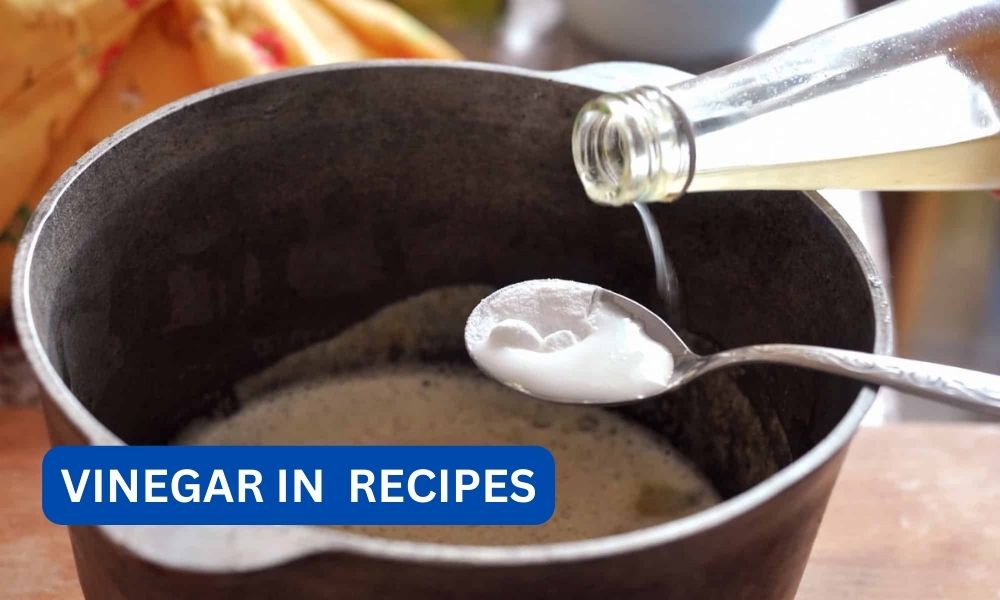Vinegar is a staple ingredient in many recipes, adding a tangy and acidic flavor to dishes. However, it is easy to go overboard with vinegar, resulting in an overpowering and unpleasant taste. Whether you accidentally added too much vinegar or the recipe called for more than you prefer, there are ways to balance out the acidity and salvage your dish. In this article, we will explore the different methods and techniques for balancing too much vinegar in a recipe.
Contents
The Science Behind Vinegar
Vinegar is a liquid consisting of acetic acid and water, produced through the fermentation of ethanol by acetic acid bacteria. It is commonly made from wine, cider, or other fermented fruits. The acidity of vinegar is measured on the pH scale, with a lower pH indicating higher acidity. Most types of vinegar have a pH level between 2 and 3, making them highly acidic.
When added to a recipe, vinegar can enhance the flavors of other ingredients and add a tangy kick. However, too much vinegar can overpower the other flavors and make the dish unpalatable. This is because vinegar is not only acidic but also contains a distinct flavor that can be overwhelming in large quantities.
Read:can green bean recipeThe Effects of Too Much Vinegar in a Recipe
Adding too much vinegar to a recipe can have various effects, depending on the type of dish and the amount of vinegar used. In general, the most common effects of too much vinegar are:
- Overpowering acidity: As mentioned earlier, vinegar is highly acidic, and adding too much of it can make the dish too sour and tart.
- Unbalanced flavors: Vinegar has a distinct flavor that can easily overpower other ingredients in a dish. This can result in an unbalanced and unpleasant taste.
- Thinning of sauces and dressings: Vinegar is often used in sauces and dressings to add acidity and thin out the consistency. However, adding too much vinegar can make the sauce or dressing too runny and watery.
- Curdling of dairy products: When vinegar is added to dairy products, such as milk or cream, it can cause them to curdle. This is because the acidity in vinegar can cause the proteins in dairy to coagulate.
How to Balance Too Much Vinegar
If you find yourself with a dish that has too much vinegar, do not panic. There are several ways to balance out the acidity and save your dish. Here are some tried and tested methods:
Read:How to convert recipes1. Dilute with Water or Broth
The simplest way to balance out too much vinegar is to dilute it with water or broth. This method works best for soups, stews, and sauces. Start by adding a small amount of water or broth to the dish and taste it. If the vinegar is still overpowering, continue adding more liquid until the acidity is balanced. Keep in mind that this method will also dilute the other flavors in the dish, so you may need to adjust the seasonings accordingly.
2. Add Sweetness
Another way to balance out the acidity of vinegar is to add sweetness. This method works well for dishes that have a sweet and sour flavor profile, such as sweet and sour sauce or pickled vegetables. You can add a small amount of sugar, honey, or maple syrup to the dish and mix it in thoroughly. Taste the dish and continue adding sweetness until the vinegar is balanced.
3. Use Cream or Butter
If the dish contains dairy, such as a creamy soup or pasta sauce, you can balance out the acidity by adding cream or butter. The fat in these ingredients can help neutralize the acidity and create a smoother and more balanced flavor. Start by adding a small amount and mix it in thoroughly. Taste the dish and continue adding more until the vinegar is balanced.
Read:what the fork recipes4. Add Acidic Ingredients
It may seem counterintuitive, but adding other acidic ingredients can help balance out the acidity of vinegar. This method works well for dishes that have a strong acidic component, such as a vinaigrette or marinade. You can add a small amount of lemon juice, lime juice, or another type of vinegar to the dish and mix it in thoroughly. Taste the dish and continue adding more until the acidity is balanced.
5. Use Baking Soda
Baking soda is a common household ingredient that can help neutralize the acidity of vinegar. This method works best for dishes that have a liquid consistency, such as soups or sauces. Start by adding a small amount of baking soda to the dish and mix it in thoroughly. The baking soda will react with the vinegar and create carbon dioxide, causing the dish to foam. Once the foaming has stopped, taste the dish and continue adding more baking soda until the acidity is balanced.
Preventing Too Much Vinegar in a Recipe
While it is easy to balance out too much vinegar in a dish, it is always better to prevent it from happening in the first place. Here are some tips to help you avoid adding too much vinegar to your recipes:
- Measure carefully: When a recipe calls for vinegar, make sure to measure it accurately. Too much or too little vinegar can significantly affect the taste of the dish.
- Adjust to taste: If you are not a fan of strong vinegar flavor, you can always adjust the amount to your liking. Start with a smaller amount and add more if needed.
- Use a milder vinegar: Not all types of vinegar have the same level of acidity. If you find that a particular type of vinegar is too strong for your taste, try using a milder one, such as rice vinegar or apple cider vinegar.
- Balance with other flavors: When using vinegar in a recipe, make sure to balance it out with other flavors. For example, if a dish has a lot of sweet ingredients, you may need to add more vinegar to balance out the sweetness.
Conclusion:
Vinegar is a versatile ingredient that can add a unique flavor to dishes. However, too much vinegar can easily ruin a recipe. By understanding the science behind vinegar and using the right techniques, you can balance out the acidity and salvage your dish. Remember to measure carefully, adjust to taste, and balance with other flavors to prevent adding too much vinegar in the first place. With these tips in mind, you can confidently use vinegar in your recipes without worrying about overpowering the other flavors.









